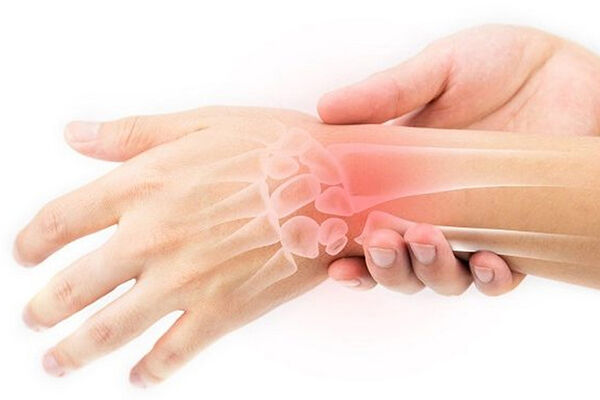Arthrosis of the hand most frequently afflicts the distal interphalangeal joints (Heberden’s nodes).
The condition was named after William Heberden, a physician that described the disease in the 17th century.
Heberden’s nodes are firm bone swellings of the distal phalanges of some or all fingers of the hand, and are a result of osteoarthritis. Hip, knee, spine and small hand joints are the first to be afflicted, as they are under stress. Osteoarthritis occurs due to the destruction of joint cartilage and joints in patients after forty years of age. Women are afflicted more frequently. Heberden’s nodes push the joint aside, cause deformation and alter the appearance of the afflicted finger. While the node is forming, there is pain, redness, the skin is warmer, and there is numbness and unpleasantness.
The symptoms are:
– Swelling
– Loss or decrease of mobility
– Swelling on the nodes
Heberden’s arthrosis can be asymptomatic, or with mild symptoms, but it can also impede everyday activities: unlocking doors, that is to say, precision movements lose their strength and are deformed. Osteoarthritis is the most common form of arthritis and usually afflicts patients upwards of forty years of age, and is more frequent in women, although not as a rule.
Other causes may include:
– Advancing years
– Genetic constitution
– Obesity
– Acute and chronic injuries
– Inborn malformations of joints and the spine
Treatment and physical therapy:
The purpose of treatment is to alleviate pain and restore normal joint functionality. Kinetic therapy is very important in treating osteoarthritis. Kinetic therapy improves joint mobility and functionality, strengthens the muscles and improves physical fitness for performing professional and home activities. Passive exercises should be avoided, as they stimulate the development of muscle spasms, while the advantage should go to active isometric exercises against resistance. While the disease is active, anti-inflammatory and analgesic cryotherapy is applied to reduce redness and swelling, as well as HILT and water ultrasound. Tecar thermotherapy is applied in the chronic stage of the disease. Pharmacological treatment includes non-steroid anti-inflammatory medication (NSAID) like Aspirin and Ibuprofen, as well as corticosteroid injections that might alleviate long-term pain. Surgical treatment is rare, and includes removing excess bone, joint renewal, joint fusion, which joins the bone in the joint and reduces finger joint mobility. A combination of clinical examinations, laboratory reports and radiological imagery can help your doctor diagnose the condition.
After the diagnosis, the physician will provide information on the disease and form a plan of physical therapy and treatment adapted to your needs.
Miloš Paunović
Chartered physiotherapist
Licensed Mulligan physiotherapist



